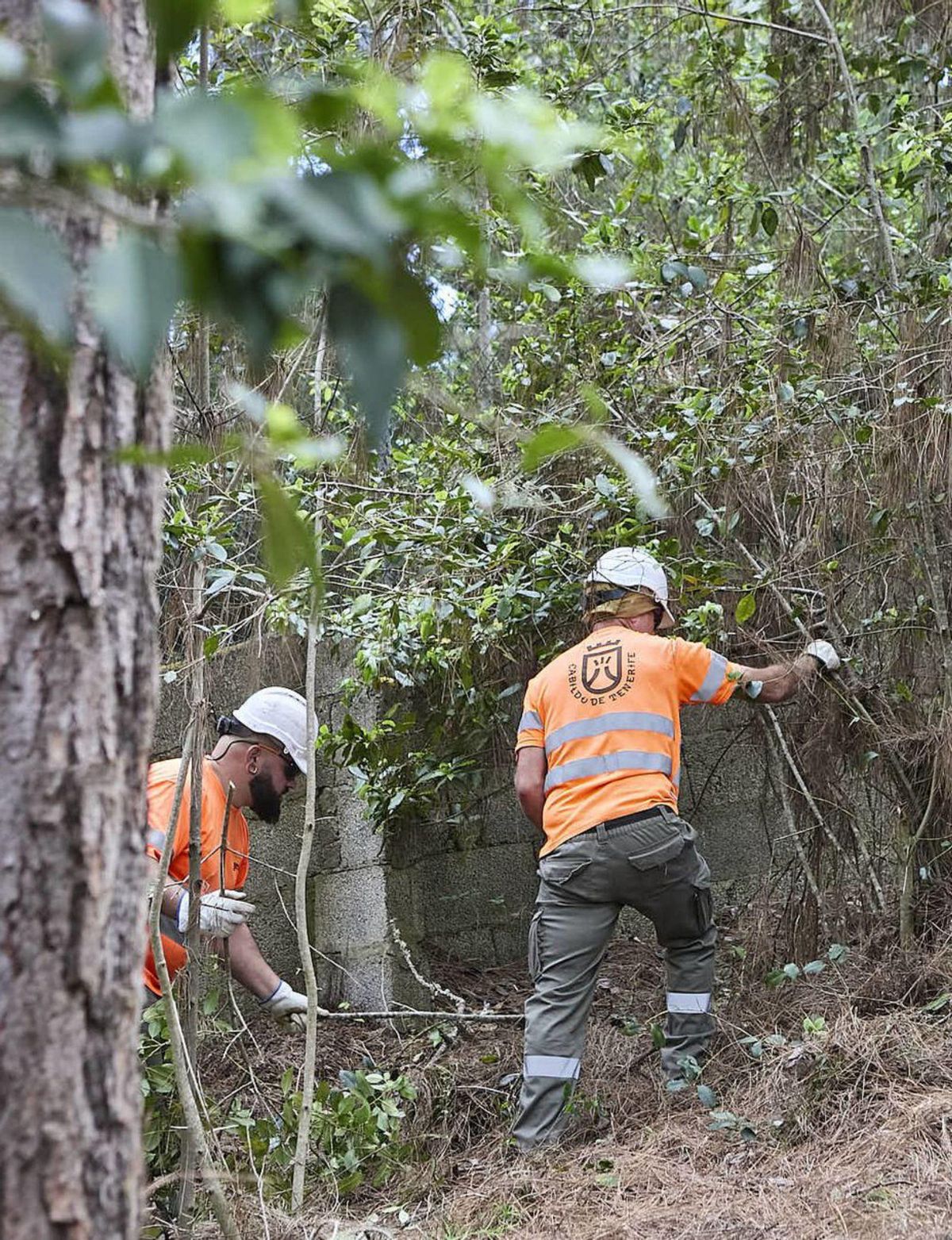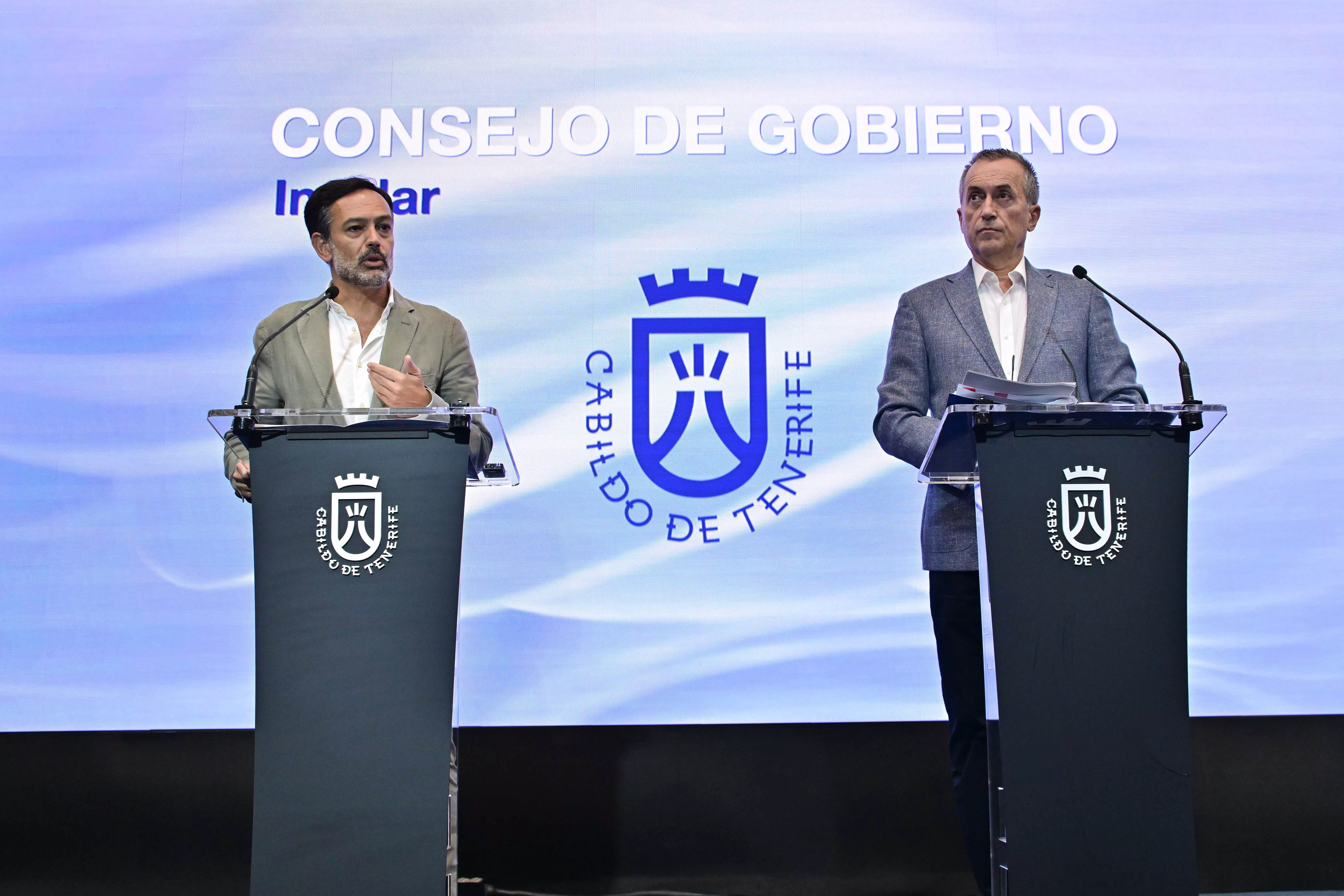“The risk of forest fires this year is higher than the previous one.” Meteorologist Vicky Palma warns of the danger facing the mountains of Tenerife, especially this summer that has just begun, higher than in 2023 when the Island suffered one of the worst fires in its history, which devastated more than 12,000 hectares of the Corona Forestal. “We are starting the fire prevention campaign with worse conditions than last year due to the seven episodes of high temperatures and the lack of rainfall,” said Vicky Palma yesterday, who advises the Tenerife Island Council on weather and safety issues.
The island council launched the Brifor operation for the prevention and extinction of forest fires last Tuesday, which will run until 3rd November and will involve a significant deployment of resources. Yesterday, the Midmountains Plan of Tenerife was presented to strengthen prevention against the threat of flames and improve natural and agricultural biodiversity. This initiative aims to enhance the safety of people living in the highest-risk areas of the Island.
It is in the border between the towns and the mountains where the Tenerife Island Council and the municipalities are putting a great deal of effort to prevent new fires from damaging the island’s environment. 25% of the island’s population (239,500 inhabitants out of a total of 950,000) live in these areas. The Tenerife Midmountains Plan has a budget of three million Euros and a three-year implementation period. Its main objective is to advise the owners residing in the midmountain areas to implement self-protection measures in their homes and farms against forest fires, mainly by reducing the amount of vegetative fuel load, and to improve natural and agricultural biodiversity through so-called biodiversity refuges on the properties.

The Island faces the summer with a greater risk of forest fires due to the drought / D. M.
The programme has been developed by the public company Gesplan and includes a set of actions to involve the municipalities and residents of these high-risk areas. The actions include training and advice on self-protection measures and preventive treatments, managing the vegetative waste generated through a free shredding service, energizing with citizen science projects for biodiversity recovery, and restoring abandoned agricultural land through land stewardship agreements.
Among the measures that property owners must take to protect their homes is maintaining a 15-metre safety strip, where the vegetative cover should be minimized as much as possible, especially when dealing with highly flammable plants such as pines, heathers, or brambles. For trees, it is recommended to keep their canopies separated from the ground and at least three metres apart from each other. Other important self-protection measures include using appropriate shutters, keeping roofs and terraces free of litter, and avoiding the accumulation of flammable materials, such as awnings or garden furniture, outside the houses.
The main axis of the implementation of this midmountains project is citizen participation because it is the citizens themselves who must become active participants in management, as reported by the Island Council in a statement. Thus, it is intended that citizens treat these vegetative masses occupying large extensions in abandoned farming areas or adjacent private estates that overlap with the mountain in high-risk fire areas. These structures require treatment to ensure the protection of human lives and properties, as well as to ensure evacuation routes. All this, notwithstanding, that the Island Council has a support service with three teams and technical staff to support these tasks.
Another purpose of the project is the ecological restoration of natural biodiversity and the conservation of agricultural landscapes, in line with the objectives of the Insular Biodiversity Strategy that will be valid until 2030. These types of actions have been valued since the potential native vegetation of the midmountains, both humid laurel forest and thermophilic scrub forest, are resilient to forest fires and the main ally for proactive firefighting.
[–>
Rosa Dávila, President of the Tenerife Island Council, highlighted in the plan presentation, held at the Red Cross camp in La Montañeta (Garachico), that it is “a pioneering initiative that aims to address an important issue such as fire prevention in the midmountain areas.” The Mayor of Garachico, José Heriberto González, thanked the island council for its commitment to the municipalities “because we are talking about an important issue that affects us all.”
Subscribe to continue reading
















